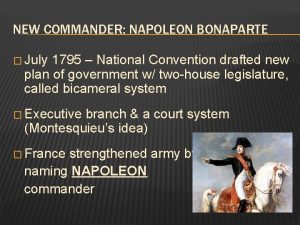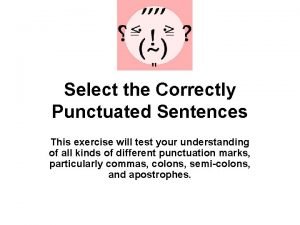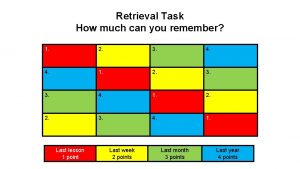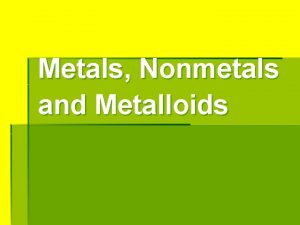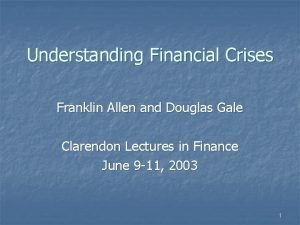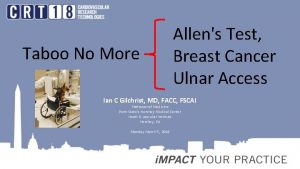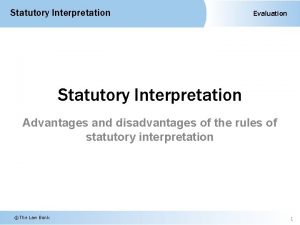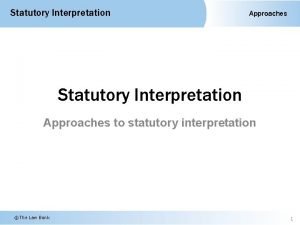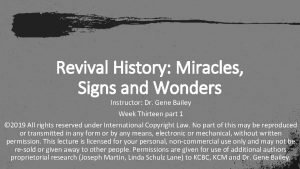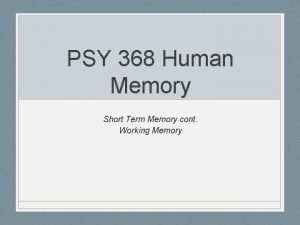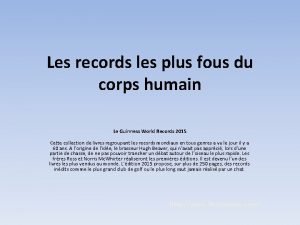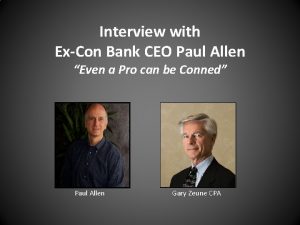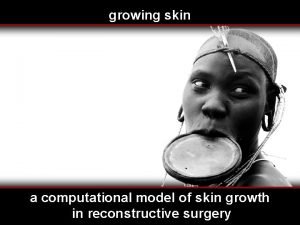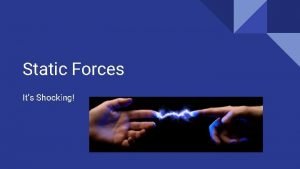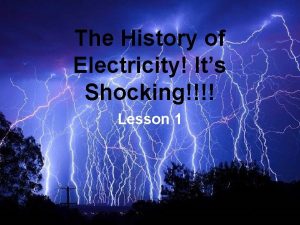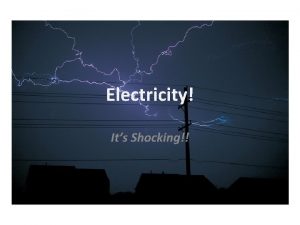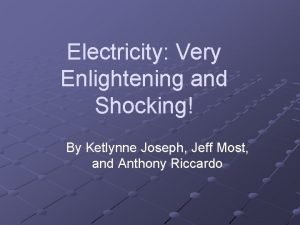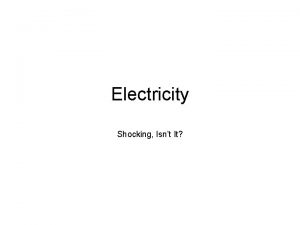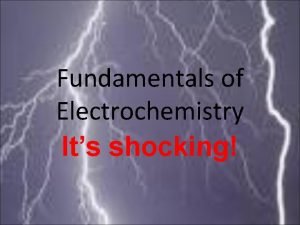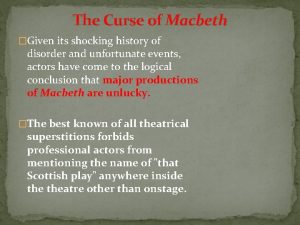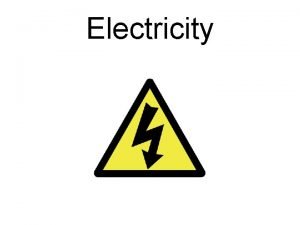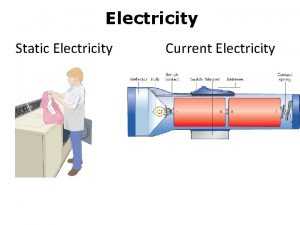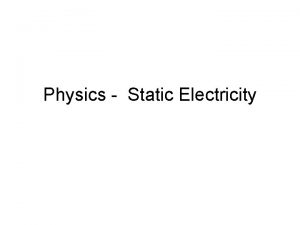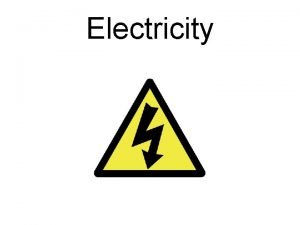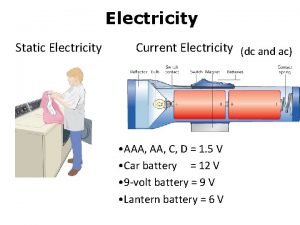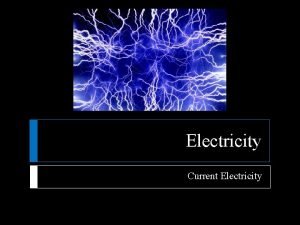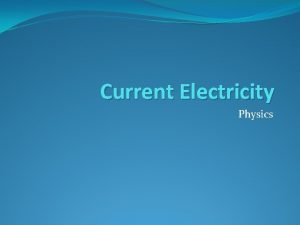Electricity Its Shocking From Tim Allen Electricity can




































- Slides: 36

Electricity! It’s Shocking!!

From Tim Allen: Electricity can be dangerous. My nephew tried to stick a penny into a plug. Whoever said a penny doesn't go far didn't see him shoot across that floor. I told him he was grounded.

Which is an example of static electricity? • A. A flashlight shining • B. A radio playing • C. An overhead light burning • D. A balloon sticking to a wall

Which is an example of static electricity? • A. A flashlight shining • B. A radio playing • C. An overhead light burning • D. A balloon sticking to a wall

Remember the electron? ?

Remember the Atom! • + Proton • 0 Neutron • - Electron



Basics • The size of the electric force between two objects depends on the size of the charges exerting the force and the distance between the objects. (Think of GRAVITY) • Charged objects exert a force on each other and can cause each other to move. • Objects become charged when they gain or lose electrons.

Law of Electric Charges • Like charges REPEL or push away (-, - or +, +) • Opposite charges ATTRACT (+, -)

The law of electric charges states that like charges repel and…

…opposites attract

Electrons can move! • They can jump or flow! • They can exert a force! • They can be moved by friction, conduction, or induction

How do objects become charged? • Objects may become charged by friction, conduction, or induction.

Friction

Conduction

Induction

Source: Holt, Rinehart, and Winston

Good to know: Ju • Charges are not created or destroyed and are saidsto be conserved. t HE li ke in • Charges move easily in conductors but do not move ATeasily insulators. !!! • Static electricity is the buildup of electric charges on an object. It is lost through electric discharge.

Current Electricity • Electricity that is caused by flowing electrons • An electric circuit allows electrons to flow from a negative pole (more electrons) to a positive pole (fewer electrons). • The rate at which charges pass through a given point measured in amperes (amps) • AC = Alternating Current (wall socket) • DC = Direct Current (battery)

AC/DC – it’s not just your parent’s band DC current – current flows only one way, from negative terminal to positive terminal; this is what we get from batteries AC current – current flows both ways; this is what we get from power plants and our wall sockets

Cells and batteries convert chemical energy or radiant energy into electrical energy.

Insulators and Conductors • Insulators are poor conductors and resist charge movement while conductors are poor insulators and tend to allow charges to easily move. • Examples of insulators include wood, plastic, and glass • Examples of conductors include metals and salt water

Units • • Potential difference – VOLTAGE Current – AMPERE (or AMPS) Resistance – OHM Ohm’s Law – the relationship between the three

Key Points • Circuits consist of an energy source, a load, wires, and, in some cases, a switch. • All parts of a series circuit are connected in a single loop. The loads in a parallel circuit are on separate branches. • Circuits fail through a short circuit or an overload. Fuses or circuit breakers protect against circuit failure. • It is important to follow safety tips when using electrical energy.

Circuits consist of an energy source, a load, wires, and, in some cases, a switch.

A closed circuit is ON! ON

An open circuit is OFF! OFF

All parts of a series circuit are connected in a single loop. ent r r u c re the get a h s y The d so n a y l l equa every time ! er dimm ulb is added er b h t o n a

With two bulbs sharing in a series, the light is dim. With three bulbs sharing, it’s even dimmer.

The loads in a parallel circuit are on separate branches. hs, t a p e l multip – they e k a t y can hare t i s c i o r t t c d The ele lbs don’t nee right. yb bu so the are all equall

Equal in brightness with 1, 2, or even 3 bulbs.

Something to think about… • Do you think your house is wired on a series or a parallel circuit? ?

If you said, “parallel” you are correct! If your house were wired on a series circuit, all your lights would be either on or off at the same time…how well would that work? ?

How does a battery work?

 Ein gleiches
Ein gleiches Lexical ambiguity
Lexical ambiguity Example of a shocking statement
Example of a shocking statement Rok napoleonic code
Rok napoleonic code Ync shock
Ync shock A shocking accident theme
A shocking accident theme Static electricity and current electricity
Static electricity and current electricity Electricity n
Electricity n How are static electricity and current electricity alike
How are static electricity and current electricity alike I can't see tim's car
I can't see tim's car Check if you can remember what tim tells you
Check if you can remember what tim tells you Periodic table metals nonmetals and metalloids color
Periodic table metals nonmetals and metalloids color The emigree structure
The emigree structure When a train increases its velocity, its momentum
When a train increases its velocity, its momentum Sunny rainy windy snowy
Sunny rainy windy snowy If its square its a sonnet summary
If its square its a sonnet summary Its halloween its halloween the moon is full and bright
Its halloween its halloween the moon is full and bright Its not easy but its worth it
Its not easy but its worth it Samuel lopez lawyer
Samuel lopez lawyer Karin allen
Karin allen Allen's test
Allen's test Allen and gale
Allen and gale Allen's test
Allen's test Whitely v chappel
Whitely v chappel Mischief rule definition
Mischief rule definition R v allen (1872) lr 1 ccr 367
R v allen (1872) lr 1 ccr 367 Nicola allen knutsford
Nicola allen knutsford Burroughs allen waltrip
Burroughs allen waltrip Wickens et al fruit meat and professions
Wickens et al fruit meat and professions William b hartsfield accomplishments
William b hartsfield accomplishments Loretta kaye
Loretta kaye Ram singh chauhan age
Ram singh chauhan age Booz allen internships
Booz allen internships Paul r allen
Paul r allen Serdar goktepe
Serdar goktepe Keith haring love heart meaning
Keith haring love heart meaning Allen thurston
Allen thurston



